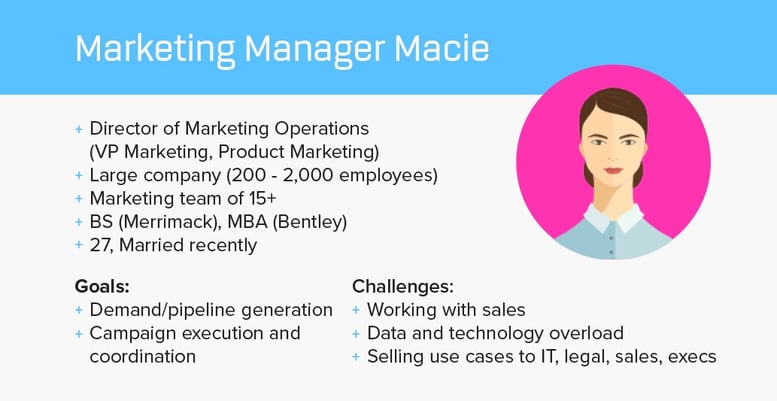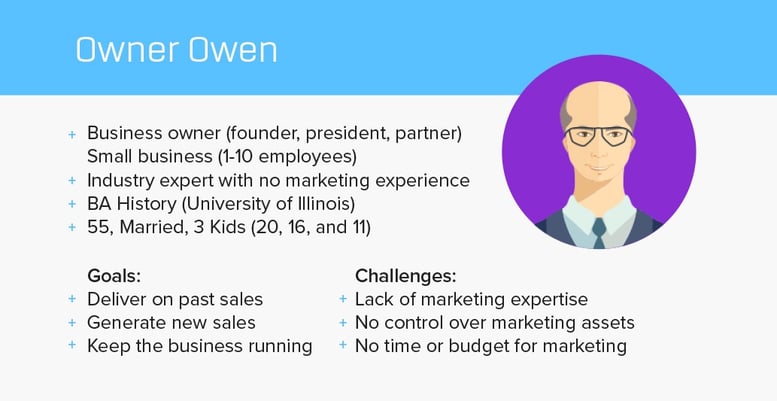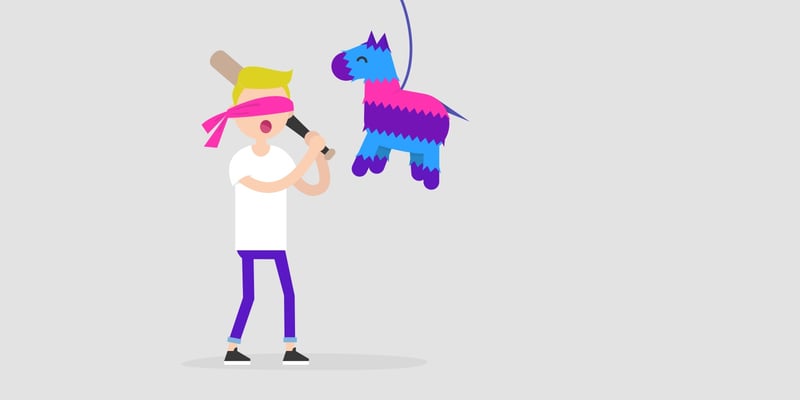When a prospect engages our inbound marketing agency they are usually teeming with excitement and anxious to get things going. They tell us all about their products or services, their industry positioning and how they want to be represented. They tell us all about their goals and their needs. All good things to be sure, but all too often they tell us very little about their customers.
It used to be the case that we’d recommend developing customer personas, just to have the client tell us to get some campaigns going and that we could look at personas at a later time, if at all. This didn’t serve our clients, or ourselves very well, and led to a lot of marketing campaigns that were mediocre at best.

Now, customer persona development is mandatory when we’re deciding if we’ll be a fit working with a new client. If they’re not willing to invest the time into learning about their own customers, we’re going to be greatly limited in helping them market effectively. To us, marketing without personas is a lot like practicing archery while blindfolded - and let’s face it, your name isn’t Robinhood.
What is a Customer Persona Anyways?
Also often referred to as a buyer persona, or marketing persona, a customer persona is a fact-based profile of your main types of customers. It includes information on their demographics, careers, goals, challenges, motivations, behaviours, where they spend time online, where they get their information from, and more.
Hubspot says it best - A buyer persona is a semi-fictional representation of your ideal customer based on market research and real data about your existing customers.
There are many benefits of creating marketing personas, and you can check out our top 5 here.
Customer Persona Examples
You will almost always have a primary customer persona, and may also have secondary buyer personas as well. Below are some customer persona examples of what these could look like.


Where Companies Without Customer Personas Fall Short

1
They don’t know who their different types of customers are
Let’s say you were going to market a product to a 60-year-old male, who had just semi-retired and was looking to scale back to working twice a week at a local manufacturing company. Next, you were going to market that same product to a 22-year-old female, who was fresh out of school and just starting her career at an accounting firm.
Do you think there is any possibility that you could use the same messaging to reach and resonate strongly with both of these people? Of course not! These are two very different people who are in completely different stages of life, with their own unique goals, challenges, behaviours and motivations.
Without personas, you are assuming that your customers and prospects are all the same because they need you, when in fact it’s the other way around. Identifying your ideal customers and organizing them into groups is the first step to understanding the different things that matter to them.
2
They don’t understand their customer’s unique questions, challenges and needs
Part of the buyer persona development process is research. A lot of research, which helps identify trends in the questions your prospects are asking, the challenges they are experiencing, the goals they’re trying to achieve and so on. Without the proper research, you are just guessing about all of these things or basing it off of what one or a few people have told you.
When developing customer personas, the more information you have, the more accurate your personas will be. And the more accurate your personas, the more effective your marketing.
3
They don’t understand the journey their prospects take before becoming a customer

Behaviour patterns can vary greatly between your customer/prospect types. If you use inbound software (we use HubSpot here at Roketto) to monitor the behaviour of your visitors, and segment them by personas, you’re likely to notice they act very differently.
By paying attention to the conversion paths and the overall buyer’s journey for each persona, you can better optimize the overall experience for your prospects.
4
They are unable to create meaningful content, or market effectively
You might not want to admit it, but it’s true. Aside from showing bottom of funnel ads for people already searching for your service or product, you cannot effectively help or market to your prospects. Why? Because you haven’t taken the time to properly get to know them.
The knowledge you uncover when developing your customer personas includes loads of rich information on the top questions asked, challenges experienced, motivations and other important things that matter to them. This should be the starting point of your content and marketing brainstorming, as you need this information in order to create content that they will actually care about it.
Effective marketing is not about the marketer, it’s about the customer. Making assumptions about them will simply lead to wasted efforts.
Are you creating a guide on “Best ways to solve X” because you “think” your customers care about and struggle with X? Or have you done the research, and are positive that solving X is their top challenge?
5
They are choosing marketing channels based on assumptions

Are you advertising on Twitter and LinkedIn because someone told you that you should or because your gut tells you that’s where your prospects should be? Or do you have rock solid evidence showing those are the top platforms used by your buyer personas?
Part of the persona development process is a deep dive into your customers demographics, behaviours and trends. This includes their watering holes, so you can learn where they get their information from.
During this process you should have a clear idea of which platforms they use, and what they use them for. You can also learn any blogs they follow, publications they are subscribed to, and more.
For example, some people might use Quora to find answers to their questions, while others might use Reddit. With the vastness of the web, it’s important to zero in on where your personas are spending their time, as guessing is likely to have poor results.
Stop adding to the noise

Customer personas help you approach marketing with confidence because they give you a strong sense of who your customers really are, what they struggle with and what they care about. They allow marketers to be incredibly timely, relevant and above all - helpful.
Unfortunately way too many businesses (and marketers) still choose to skip this step, and as a result their marketing efforts just don’t hit the mark. Instead, they add to the never-ending sea of directionless promotional noise that gives us marketers a bad name.
Since 97% of marketers are slowly getting more effective at collecting data, now is the time to build on that foundation. Check out this great infographic from Campaign Monitor that digs into data-driven marketing strategies.
Need a hand developing customer personas for your business? We’d love to help. We even have a super cool tool to make it easy for you to reach out to your customers. Ask us how!

Chris Onyett
Chris is one of the managing partners at Roketto. His area of expertise is digital marketing and loves sharing and educating on topics like Google Ads, CPC bidding tactics, Google Analytics, and marketing automation. When Chris isn't in the office, he enjoys playing volleyball, mountain biking, and hiking with his American Eskimo.













2.png)
2.png)









